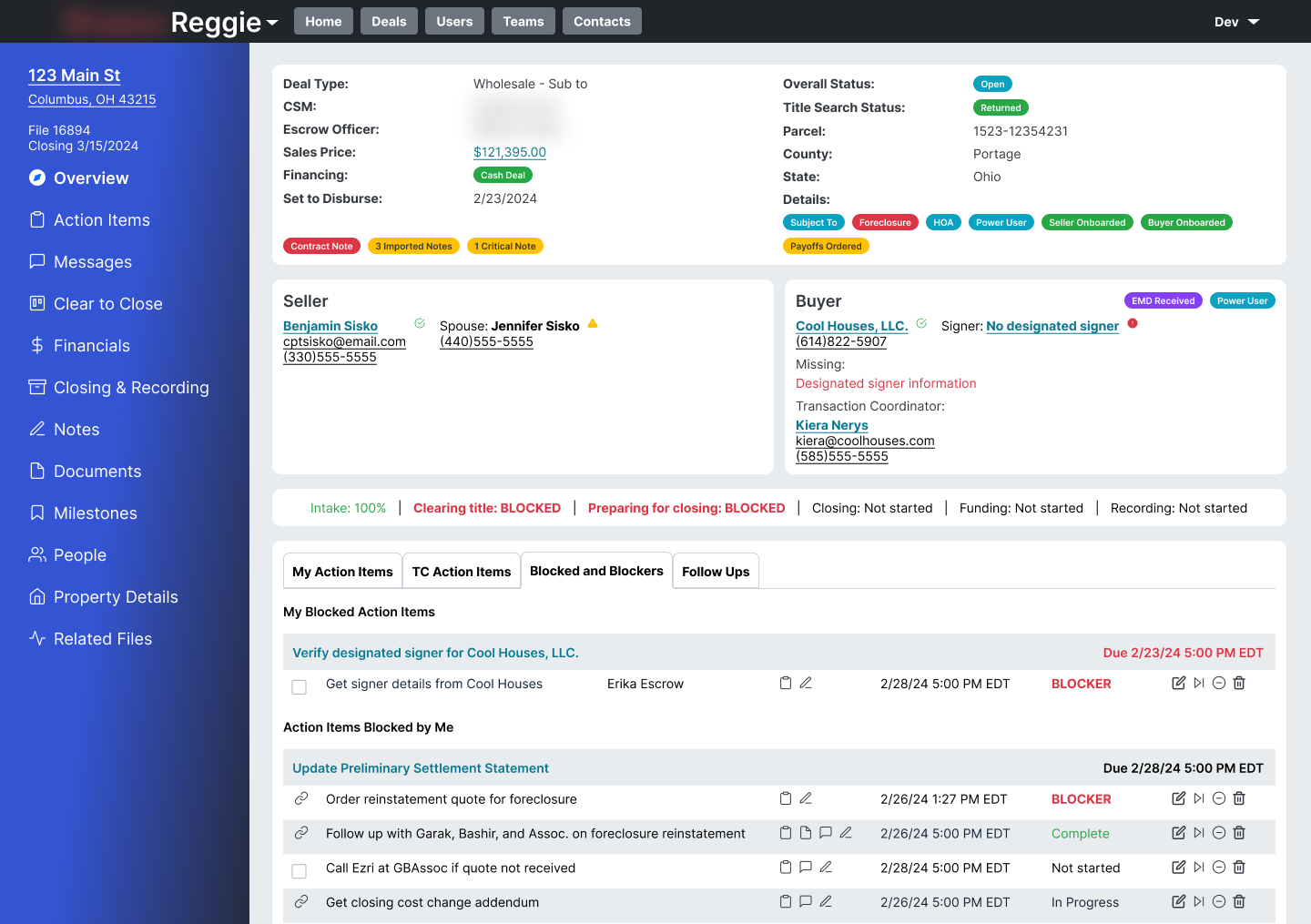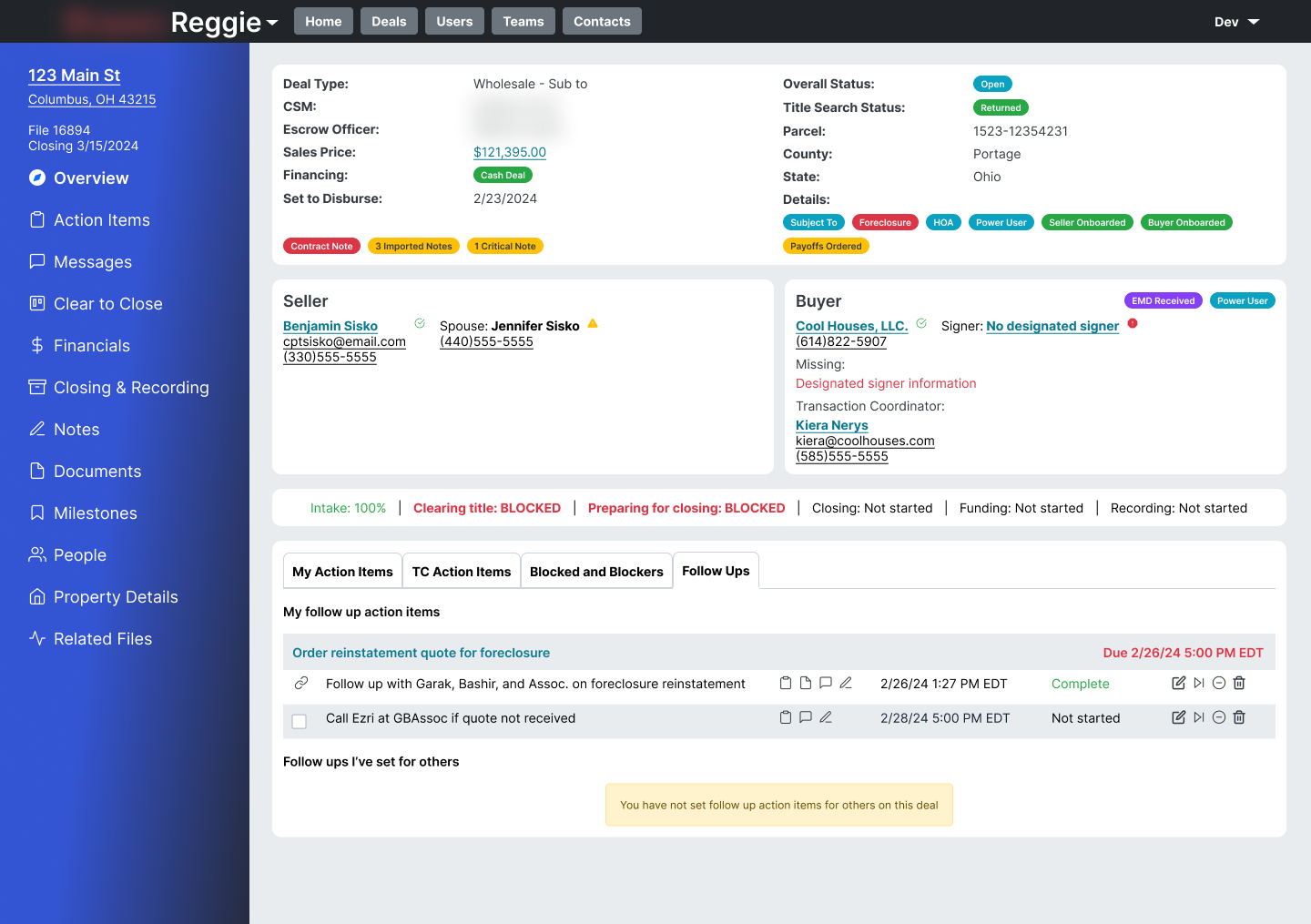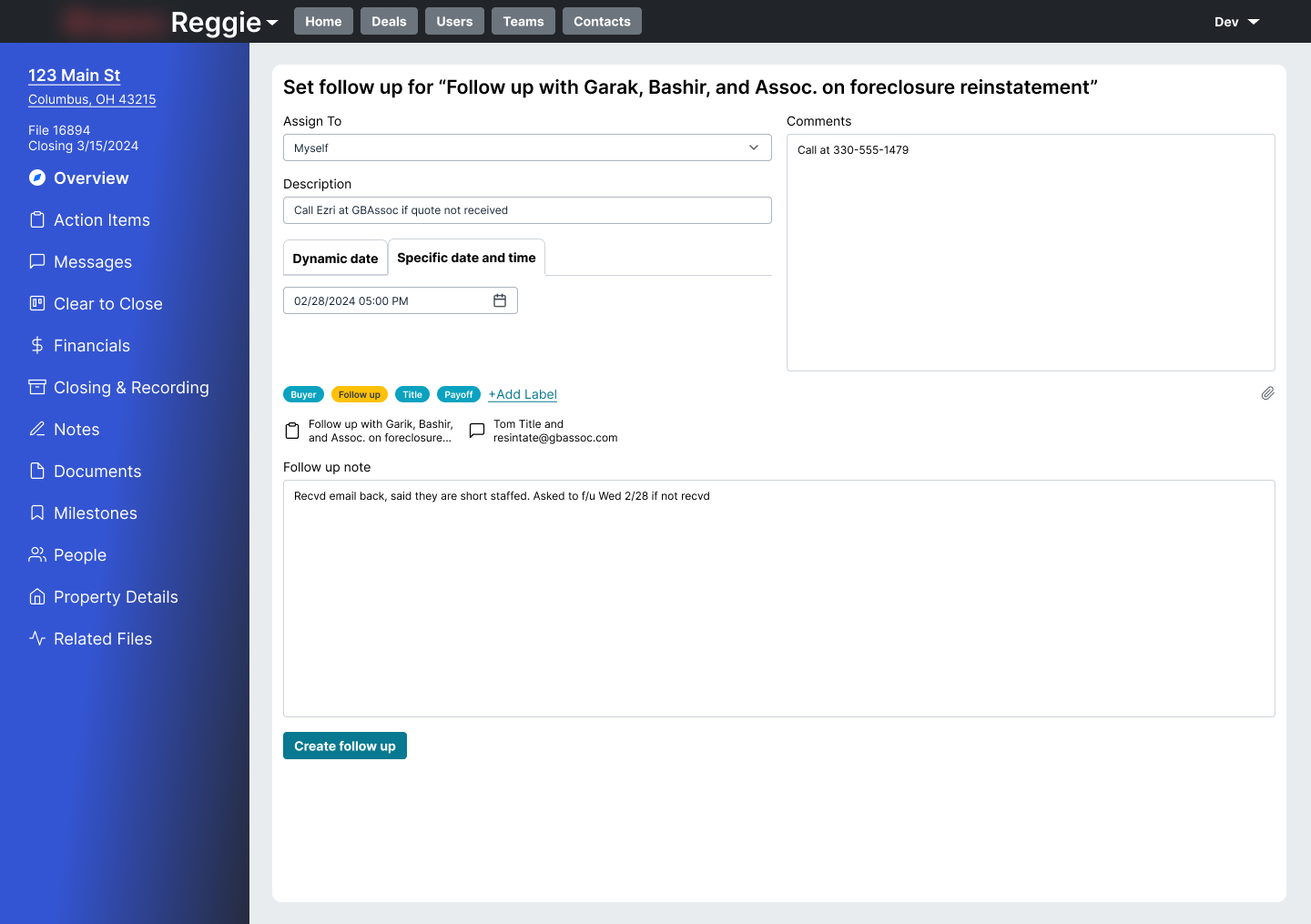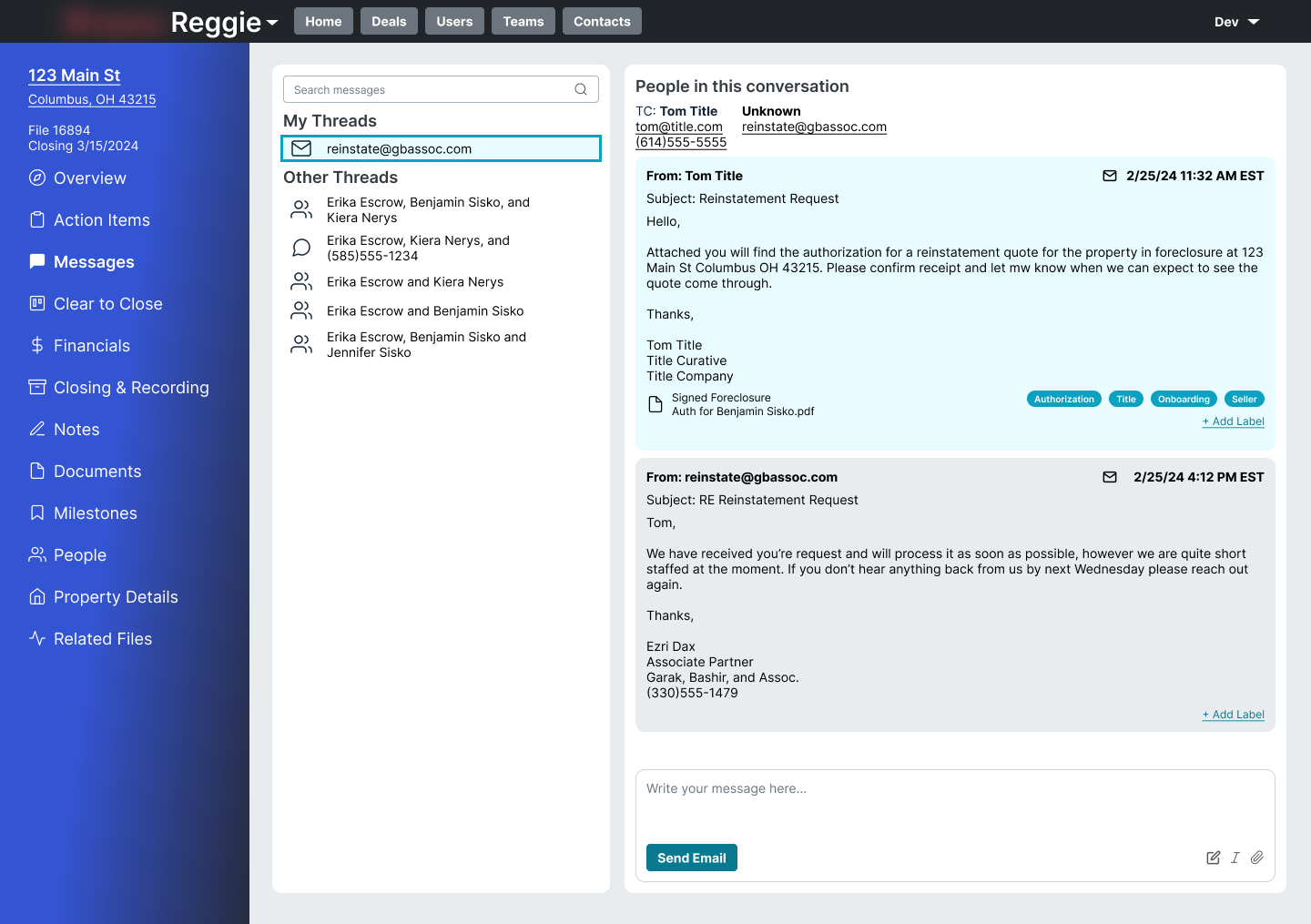Key Facts
• The client had completed their first steps to a homebuilt solution to replace their third party case management and accounting system.
• The client was in an early growth phase and needed to scale their customer base without significantly increasing headcount. They also needed to drive customer satisfaction and retention with first-call resolution of questions and issues.
• This vision work set the compass for all future development of the internal case management system. Even though development continues, already the principles put in place have enabled a largely un-trained phone team to reach a first-call resolution rate of over 75%.
The Problem
The client was an early stage start up working in real estate closings and title services. To get spun up quickly they had used third party partners and software to manage their files and customers but had always intended to transition to a homebuilt solution.
However, even after completing the first pass of their internal solution, it still lacked some core functionality, and what it did have was largely screens that simply regurgitated the database data. Most people were working out of multiple systems with different structures and varying degrees of functionality. To make matters worse, a real estate closing has several key players that work on different parts of the file at different times, and those hand offs were being coordinated in yet another system. This left people working in multiple opaque systems, unable to effectively resolve client questions, and slowing down the closing process.
The client's need was clear - a vision for their system that consolidated as many user needs as possible, drove transparency in handoffs and process, and enabled the team to bring on more clients while increasing client satisfaction with first-call resolution of issues and a clear and quick closing process.
Defining the Solution
For discovery on this project, I took a three pronged approach to determine the best outcomes for the system.
• I audited Slack threads and conversations to best understand what users were facilitating outside of the system and what might be needed to address it in-system.
• I audited customer messages and call logs to better understand the kinds of questions they were asking and understand how we can make those easier for users to resolve.
• I worked with users and SMEs to understand what data was available in the system as it existed and how it was all connected and used.
A few findings were particularly noteworthy and ended up largely driving the direction of the project and intended outcomes.
• The system assumed that most communications, internally and externally, were about actionable things, but actually they were overwhelmingly status updates.
• While we knew the data in the system was highly connected and contextual, what I hadn't anticipated was the specific connection between action items internal users could set and the notes they could create on a file, and how both were important to hand offs and tracking work.
• A key hurdle was managing communications in multiple places (emails, in-system messages, phone calls, and text messages). Bringing all of this into one consolidated place would greatly increase transparency and effectiveness for all users.
Designs
A redesigned home page helped users track all files in progress as well as their most important tasks and priorities in the day.

A reorganized file overview provides dense and contextual information at a glance

New statuses for action items, including "blocked" and "needs follow up", reduced the need for users to constantly ask for status updates

Adding the ability to add a note to an action item was critical to clarity in handoffs

Unified communications allowed users to see all of the pertinent information for the file, regardless of who sent it
Outcomes
Multiple versions of the designs were created and tested with internal, trained users on several of their key daily tasks.
• Accurately answer common customer call questions based on a test file in the new interface.
• Following up on common handoffs between team members looking at how effectively they could determine the state of a file.
In all cases users were able to correctly and confidently answer the customer questions, though some iteration was needed for specific representation of some of the data.
• Added left navigation pane and created card based page layouts
• Created the ability to link notes to other items in the file such as action items, title issues, and documents
Ultimately it was decided to implement designs in stages, and while not everything has been implemented yet, several key pieces such as the left hand navigation, card based layout, and contextual re-grouping of information have already produced returns.
• Moved nearly all workflows and handoffs out of Slack, creating a single source of truth for team members
• Hired a comms team with 75-80% first call resolution rates, even without being trained in the subject matter
• Gave us a concrete short and long term vision to action against and use to evaluate ideas and priorities
